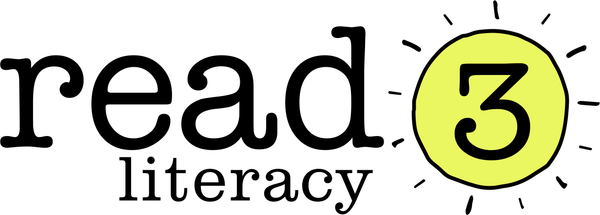Why sounding out words is so hard for children with processing difficulties
Many phonics programs centre around teaching children to sound out a word letter-by-letter, then blend the sounds back together to make a word. For example, 'p-l-a-n' blended together is 'plan'.
However, for young children and those with poor working memory, this traditional approach of sounding out a word letter-by-letter often results in a 'system overload' as words get longer. They are not able to remember all the individual sounds, so they can't blend them back together to correctly read the word. This is particularly apparent when spelling. You will see letters left out, letters out of order and unexpected sound-letter choices.
When we break words into natural sound patterns - like onset-rime and syllables - struggling young readers can 'hang on' to all the sounds more easily, identify the vowel sounds more clearly and reduce spelling errors.
Chunking words is a recommended strategy for children with poor working memory or rapid automatic naming difficulties.
As recommended by reading experts at Tufts, MIT and Harvard Universities, the Read3 leaning system centres around chunking using natural sound segments to help children with multiple processing difficulties achieve reading fluency.

Chunking involves splitting words into two parts: the consonant/s before the vowel (the onset); and from the vowel to the end of the word (the rime). For example 'plant' would be split into 'pl-ant'. The child then focuses on each chunk separately - sounds out and blends the individual phonemes (sounds) within each chunk ('p-l' = 'pl' and 'a-n-t = 'ant') - and then blends the two chunks together ('pl-ant' = 'plant'). Our 'HEAR' activities that focus on deletion and manipulation of individual phonemes ensure children systematically develop advanced phoneme awareness, as recommended by Dr David Kilpatrick (2016).
There are many spelling patterns (chunks) that occur frequently in our language. As phoneme awareness improves, and the child starts to familiarise themselves with frequently occurring chunks, they will no longer need to sound out the individual phonemes - they will instantly recognise the chunk as a whole. This efficient processing is referred to as orthographic mapping. It is the basis of fluent reading and is what most of us do subconsciously every time we see a familiar word. We recognise it by sight, without needing to sound it out.
For children with processing difficulties, chunking words into familiar sound segments increases reading efficiency and fluency, allowing the child to focus on the true task of reading which is comprehension (Orkin 2018).
Interestingly, in the English language there are usually no more than three sounds in the onset or rime segment, although there may be more letters. This means sound sequencing problems can be reduced as the child need only think about a maximum of three sounds in each segment - a beginning, middle and end sound. With less load on working memory, chunking also has a positive impact on a child's ability to spell.
Chunking words places the vowel sound in the 'starting' position in the rime segment which helps children with weak phonemic awareness.
Vowels are the hardest element of reading and spelling for any child to master. There are 20+ vowels sounds in English and only five letters in the alphabet that we use to spell them! Children with sound processing difficulties struggle even more to match the vowel sounds to a correct spelling choice.
First sounds in words are always the easiest for children to hear. Vowels occur in the middle of words and the sounds can be 'fuzzy' for many children. By the chunking the word into an onset and rime segment, the vowel becomes the first sound in the rime segment making it far easier to hear and process. It also gives the child an immediate auditory 'hook' to the natural rhyming patterns that occur in the English language. There's a reason we all love poems, ditties and songs - our brains naturally seek out rhyme and patterns.
Read3 offers an integrated approach to learning. We focus on phonemic awareness, phonics and fluency. Children are simultaneously learning to hear sound patterns (HEAR activities) and read and spell those patterns (SEE activities) leading to greater familiarity and understanding. AUTO activities and monitoring focus on building automatic recall of those chunks to develop fluent word recognition. Fluency is developed at word, sentence and passage level at key stages through the program.
